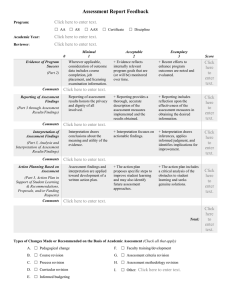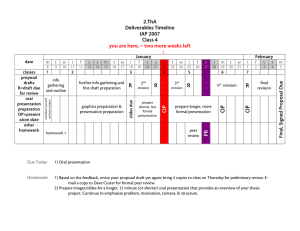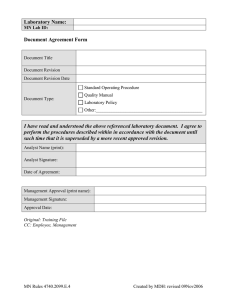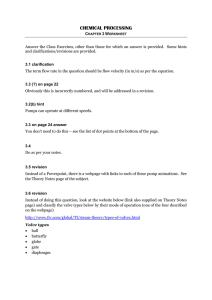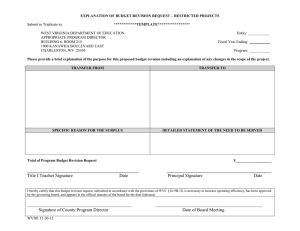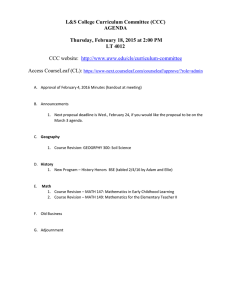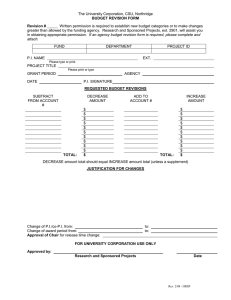Revision Techniques
advertisement
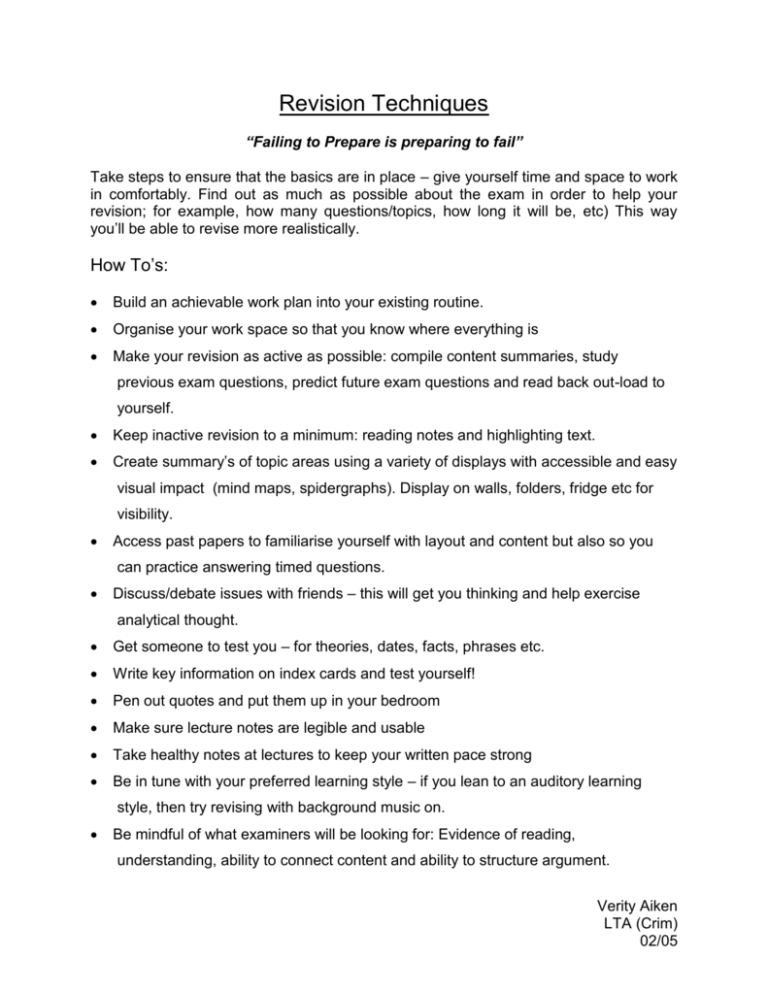
Revision Techniques “Failing to Prepare is preparing to fail” Take steps to ensure that the basics are in place – give yourself time and space to work in comfortably. Find out as much as possible about the exam in order to help your revision; for example, how many questions/topics, how long it will be, etc) This way you’ll be able to revise more realistically. How To’s: Build an achievable work plan into your existing routine. Organise your work space so that you know where everything is Make your revision as active as possible: compile content summaries, study previous exam questions, predict future exam questions and read back out-load to yourself. Keep inactive revision to a minimum: reading notes and highlighting text. Create summary’s of topic areas using a variety of displays with accessible and easy visual impact (mind maps, spidergraphs). Display on walls, folders, fridge etc for visibility. Access past papers to familiarise yourself with layout and content but also so you can practice answering timed questions. Discuss/debate issues with friends – this will get you thinking and help exercise analytical thought. Get someone to test you – for theories, dates, facts, phrases etc. Write key information on index cards and test yourself! Pen out quotes and put them up in your bedroom Make sure lecture notes are legible and usable Take healthy notes at lectures to keep your written pace strong Be in tune with your preferred learning style – if you lean to an auditory learning style, then try revising with background music on. Be mindful of what examiners will be looking for: Evidence of reading, understanding, ability to connect content and ability to structure argument. Verity Aiken LTA (Crim) 02/05

